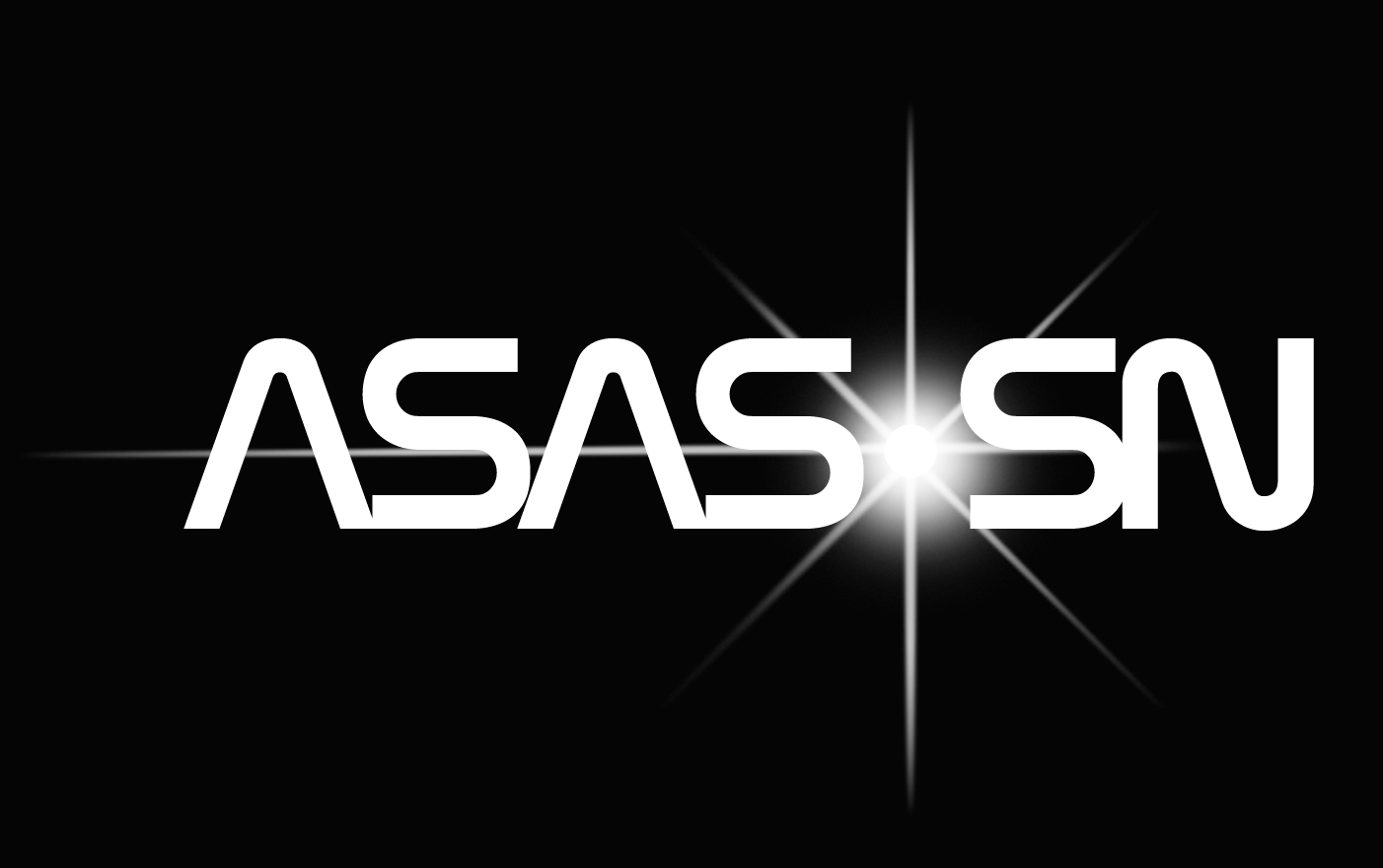
Assassin Picture of the Week
 | APOW Assassin Picture of the Week |
ASASSN-14ae, A Very Luminous Transient
|
Despite weeks of bad weather in Hawaii (yet another reason we are looking forward to deploying additional ASAS-SN telescopes in Chile), we continue to discover exciting transients. ASASSN-14ae was discovered in images obtained 2013 UT Jan. 25.51 at V~17 mag. The object was also detected, at approx. the same magnitude, on UT Jan. 24. The source is undetected (V>17 mag) in previous data taken at this location obtained on UT Jan. 1 and earlier. Images obtained on UT Jan 27 with the LCOGT-1m robotic telescope at McDonald observatory and with the LT-2m telescope confirm the detection of the new transient. Our APOW shows the ASAS-SN V-band reference image (top left), ASAS-SN V-band discovery subtraction image (top right), SDSS g-band prediscovery image (bottom left), and LT-2m g-band confirmation image (bottom right). After our discovery, we obtained a 3ks Swift TOO observation of the transient on UT Jan 27.9. The UVOT optical/UV magnitudes of the source, measured using a r=5" aperture, were: v=16.43 +/- 0.05, b=16.70 +/- 0.04, u=15.58 +/- 0.04, uvw1=15.10 +/- 0.03, uvm2=14.76 +/- 0.02, uvw2=15.05 +/- 0.02 (uncorrected for extinction). The average coordinates of the source measured in the UVOT images are RA = 11:08:40.11, DEC = +34:05:52.4 (J2000), only 0.18" from the center of its host galaxy. This figure shows the detection of the transient in the Swift/UVOT filters. From the Swift measurements and the prediscovery imaging of the host galaxy (SDSS and 2MASS) we obtain an SED before and after discovery (see this figure) which shows that the transient is quite blue. We also obtained an optical spectrum (range 3500-9800 Angstroms; FWHM res. 7 Angstroms) of ASASSN-14ae on UT Jan 29.2 with DIS mounted on the APO 3.5m telescope. The spectrum shows a blue continuum (Teff ~ 14500 K, fitting the blue part of the spectrum) with a broad, relatively weak P-Cygni feature consistent with H-alpha. After correcting for the redshift of the host galaxy (z=0.0436 from SDSS), we measure a velocity of -15000 km/s for the H-alpha absorption trough. A plot with the optical spectrum can be found here. The blue continuum and relatively weak H-alpha detection make this transient consistent with a young Type II supernova. Given the distance to the host galaxy (d ~ 180 Mpc) and apparent magnitude, it is a luminous event with absolute V mag -19.9 (absolute U mag approx. -21). While a young Type II SN seems the most likely interpretation, the proximity to the galactic nucleus makes a tidal capture transient a potential alternative. |
Back to ASAS-SN page.
See previous APOWs:
Our Latest Paper, in Video Form
Host Galaxies of ASAS-SN Supernovae
Back in Real-Time Discovery Business!
Active (Some Less, Some More) Galactic Nuclei with ASAS-SN
Swift
Ultraviolet and Optical Follow-Up of ASASSN-13dl, Our Latest
Supernova
Dramatic AGN Outburst in NGC 2617
Two ASAS-SN Views of Orion Nebula
AAVSO Observations of Cataclysmic Variable ASASSN-13ck
Two ASAS-SN Supernovae in One Day!
Extreme M-dwarf Flare Observed by ASAS-SN;
Multiband photometric follow-up of ASASSN-13aw (SN 2013dr);
How ASAS-SN Discovers Supernovae: Case of Supernova ASASSN-13bb;
NGC 2617: Dramatic Seyfert Type Change;
ASASSN-13/SN 2013da: Our First Supernova Three Weeks Later;
This homepage is maintained by Tom Holoien, Ben Shappee and Kris Stanek.
Updated Fri Feb 14 15:16:53 EST 2014